
$RANCH
• All sale bulls’ averages rank in top 13%.
• Mothers calve every year in 45 days or they are gone.
• All sale bulls’ averages rank in top13% for Fertility.
• All sale bulls’ averages rank in in 10% for Teat and Udder.
$Profit
• All sale bulls’ averages rank in top 8% .
• Balanced trait selection for Life Cycle Efficiency, moderate size, post weaning growth, carcass merit and low PAP.
$Feeder
• All sale bulls’ averages rank in top 13%.
• Feed Efficiency Testing since 2010.
• Every bull feed efficiency tested.






Bar T Bar Ranches Annual Bull Sale April 13, 2024 at 1:00 p.m. (PDT) Southern Balancers, Balancers, Gelbvieh & Angus Crater Ranch Headquarters · Winslow, Ariz. Bulls200Sell! Herd Consultant Lee Leachman (970) 568-3983 Seedstock Marketing Bob & Judy Prosser (928) 380-5149 Kristin Hovey (970) 485-0974 info@bartbar.comm BAR T BAR RANCHES CA T TLE Utilize the most proven database in the industry for traits that go
to
marketing advantage.
directly
your bottom line and give you a
You Can Wean More Calves Per Cow Exposed on the Range! Bulls out of the most proven range cow herd in the Southwest. Simple numbers you can trust.





•
•
•
•
•
• Make the most informed decision for your business
• Never purchase unnecessary coverage and pay more than you need
f rom the u n pr e dic ta bl e marke t s wit h Lives t ock R isk P rot ect ion (LRP)!
LRP can be used as a useful tool to securing lending for your operation! It provides year-round coverage on a per-head basis and a guaranteed price with no bid/ask spread. When

(877-257-4671) ckpin surance.com
877-CKP-INS1
Le t CKP H elp You Pro t ec t Your P RF & LRP so you :
Protect your land and livelihood against potential losses due to lack of rainfall
Red uce ri s k a nd pro t ec t yo u r o p er a tion
buying business insurance, it’s okay to have a generalist agent. When buying PRF insurance, it’s SMART to have a SPECIALIST.
Protects
flow
yo ur cash
for PRF
N o claim forms
Quick
payments
& easy cla im
required Protect Your PRF and LRP CONTACT Jack Field 509-929-1711 jfield@ckpinsurance.com (Pasture, Rangeland, Forage & Livestock
Protection)
No adjusters
Risk
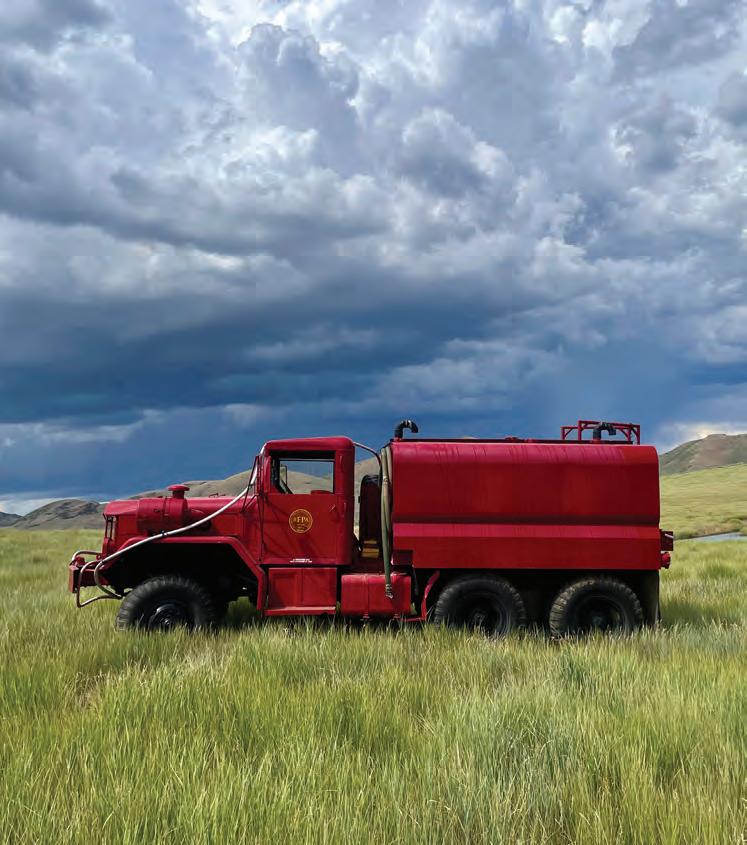
FEATURES
BOARD OF DIRECTORS
PRESIDENT
Jerry Wroten (Wilder) 208-831-7339
PRESIDENT-ELECT
Spencer Black (Almo) 208-647-8130
VICE PRESIDENT
Val Carter (Pingree) 208-390-4811
PAST PRESIDENT
Kim Burton Brackett (Kimberly) 208-308-1952
TREASURER
Cody Hendrix (Rigby) 208-360-9693
FEEDER COUNCIL CHAIR
Shawna Gill (Grandview) 208-850-9076
PUREBRED COUNCIL CHAIR
Arnold Callison (Blackfoot) 208-681-8441
COW-CALF COUNCIL CHAIR
Roscoe Lake (Blackfoot) 208-604-3650
CATTLEWOMEN COUNCIL CHAIR
Tay Brackett (Filer) 208-866-4967
DISTRICT 1 REPRESENTATIVES
Eric Wittman (Lapwai) 208-790-5344
Cece Baldwin (Coeur d’Alene) 208-699-6611
DISTRICT 2 REPRESENTATIVES
Lori Ireland (Mountain Home) 208-866-0112
Royce Schwenkfelder (Cambridge) 208-550-2200
DISTRICT 3 REPRESENTATIVES
Chase Lanting (Twin Falls) 208-539-4371
Jesse Human (Jerome) 208-358-1277
DISTRICT 4 REPRESENTATIVES
Shane Rosenkrance (Mackay) 208-589-3110
Chris Kirby (Salmon) 208-223-2258
DISTRICT 5 REPRESENTATIVES
Matt Thomson (Blackfoot) 208-589-6901
Tim Munns (Snowville) 435-279-4420
ALLIED INDUSTRY REPRESENTATIVE
Kody Dee Williams.....(Fruitland) 509-948-6430
DIRECTORS AT LARGE
Casey Scott...............(Clarkston) 208-431-3024
Adrian Meyer (Grand View) 208-509-1892
CATTLEWOMEN BOARD REPRESENTATIVE
Christie Prescott (Filer) 208-420-3548
ADMINISTRATIVE STAFF
EXECUTIVE VICE PRESIDENT
Cameron Mulrony cameron@idahocattle.org
NATURAL RESOURCES POLICY DIRECTOR
Karen Williams karen@idahocattle.org
ADMINISTRATIVE ASSISTANT
Michelle Johnson michelle@idahocattle.org
DIR. OF MEMBERSHIP & INDUSTRY ENGAGEMENT
Morgan Lutgen morgan@idahocattle.org
Contact Idaho Cattle Association:
Mailing address: P.O. Box 15397, Boise, ID 83715
Location: 2120 Airport Way, Boise, ID 83705
Phone: 208-343-1615
For advertising sales, contact: idahocattlepublications@gmail.com
The Line Rider is the official publication of the Idaho Cattle Association. It is published 10 times each year, in January, February, March, April/May, June, July/August, September, October, November and December.
4 LINE RIDER MARCH 2024 www.idahocattle.org TABLE OF CONTENTS MARCH 2024
Message from the President 6 Message from the EVP 8 Message from Natural Resources Policy Director 10 Message from the Membership Chair 12 Guest Column: Updates From Washington 18 Legislative Update 28
DEPARTMENTS
Cover Story: Legal Perspective: Why Being a Member of ICA Matters In the Courtroom 14 Idaho Beef Council: Interesting (to us) Facts About the Beef Checkoff 20 U of I: Records: A Valuable and Underused Tool 26 Meet New NCBA Officers and Staff from the West 32 A Look Inside Idaho’s Young Cattle Producer Conference 36 Membership Issue
Photo by Charlie Lyons


Participation is key
Why your input and membership matters
Lettin’ the cat outta the bag is a whole lot easier ‘n puttin’ it back in.”
–W ill Rogers
In the flash and glamor of today’s age, it’s the loudest voice in the room who tends to carry the focus. The ones who share colorful, vibrant and, at times, extreme ideas tend to garner this attention. Open any social media app, news website or simply turn on the TV and you are engulfed with the problems of today. When you take a step back and think it over, everyone sure has gotten good at letting the cat out of the bag and seem to be gone when the furry feline needs to be put back.
I would love to think we are batting 1000, however, experience has taught me just because we hit the ball doesn’t mean we get on base.
As we move through the legislative session and creep towards the coming political election, our fine state continues to be bombarded with ideas of what others, including ourselves, have done wrong in our efforts. The infighting of groups who share common principles and goals tend to lose more often than when they win. Even within the cattle industry, groups who share common beliefs, and by common beliefs I mean agree on 90-95% of our issues, are split over the minuscule remaining 5%. This shows the importance of the
 BY JERRY WROTEN ICA President
BY JERRY WROTEN ICA President
ICA membership- we do not focus on letting the cat out, but work every day to try and put it back. The ICA will continue to hold steadfast in our efforts to preserve, promote and protect the Idaho cattle industry. Our staff selflessly works through the days and weeks to provide the Idaho Cattle industry with a voice. A voice that can be heard in the halls of the capitol in Boise and at the national level, whether in Denver or Washington DC. I would love to think we are batting 1000, however experience has taught me just because we hit the ball doesn’t mean we get on base. It takes membership input for our policies and discussions to be successful and ensure a well-rounded organization. All agricultural participants are invited (and encouraged) to join the ICA to share their experiences that will drive us into the future. Too many times we see people choosing not to be at the table or meetings for one reason or another. Is this you? In making a decision not to participate, an opportunity is missed that might otherwise improve our understanding and knowledge that comes from having open discussions.
I have seen firsthand the exemplary work of your ICA staff & leaders. We have considerable tenure and bountiful knowledge in all rooms. There is high regard for our proven track record and our volunteer board comes from across the state with vim and vigor. These board members represent all segments of the industry from small, rural communities to the metropolis of the Treasure Valley. As this article is published mainly for members, it is my ask of you to share our successes with your neighbors and friends who care about this great industry that is part of feeding the world. Share with us what can be done better to serve you in our roles. Ol’ Will said it wasn’t easy- and we can only put back the cats we know are loose.
6 LINE RIDER MARCH 2024 www.idahocattle.org
MESSAGE FROM THE PRESIDENT
“






A Range Raised, Feedlot Proven Program SITZ STELLAR Contact: Jay Smith: 208-940-1020 Find Us At: JLazySAngusRanch SAV TERRITORY J LAZY S ANGUS RANCH Maternal That Makes The Grade 7th Annual Bull sale March 15, 2024 Social 2pm,Sale 3pm at the Ranch 6 miles north of Salmon Idaho SITZ ACCOMPLISHMENT POSS RAWHIDE Special offering 40 Home raised, Fancy one iron replacement heifers! JLazySAngusRanch.com
Comfort does not equate to progress
Making hard decisions in the name of growth
What is right is not always easy. I think about this often as we navigate conversation across the nation related to the policy’s and practices that guide our operations.
I will let you decide what is right for your operation, family, life, but it will come as no surprise to any of us that the easiest path is not always the right path.
“Two roads diverged in a yellow wood, And sorry I could not travel both, And be one traveler, long I stood” Robert Frost wrote these word in his poem The Road Not Taken. Often in our travels and in our work we find ourselves choosing which road to take. As we sit in these meetings and events we realize that the progress made usually comes when there is a honest and pragmatic discussion. This is where the lack of ease comes to play.
As we navigate the remainder or the 2024 legislative session and move forward into the upcoming election cycle, there will continue to be uncomfortable situations and uphill battles.
Hard conversations create progress, build empires, and produce results. We should not be afraid to engage in a tough conversation or look at an option that may look outside of the ordinary.
I am yet to find the situation that has yielded high rewards with out a level of risk. Those of us that engage in the risk can in turn reap a reward. Now, I am not so naive to think that there
 BY CAMERON MULRONY ICA Executive Vice President
BY CAMERON MULRONY ICA Executive Vice President
is not an option of non-success, but as I have stated in past musings there is no loss, you win or you learn. It is a process, policy development, ranching operation, and even the simple tasks of selection and breeding all involve a process and sometimes the best results come from taking the road less traveled.
February has gone and, in the month, we have seen many pieces of legislation introduced, debated, and voted upon. These decisions have not come easy and we will continue our work to preserve, promote, and protect this industry throughout the session. As we navigate the remainder or the 2024 legislative session and move forward into the upcoming election cycle, there will continue to be uncomfortable situations and uphill battles, all of which I am willing to endure to ensure the continued success of this industry.
Our comments from you as members, as well as us that work for the association continue to carry influence and making the right thing easier if you can see that there is support from our folks. This does not mean that we will have all gum drops and pixies in the latter part of this session or in the realm of the federal government but knowing that you are speaking on behalf of the masses is more rewarding than speaking on behalf of a vocal minority.
Each day we face a path forward and some days easy sounds good and we can take that path from time to time, but I also thank each of you for not always taking the easy road, but continuing to work for what seems to be right for your family, operation, industry, and state. It takes all kinds of kinds to make the world go round, but I prefer to work with those that find themselves in situations where “Two roads diverged in a wood, and I—I took the one less traveled by, and that has made all the difference”
8 LINE RIDER MARCH 2024 www.idahocattle.org
MESSAGE FROM THE EVP

Growing your future. With over a century financing agriculture, we know firsthand the challenges and rewards you face every day. Let’s work together to help you build your best future. Learn more at AgWestFC.com. This institution is an equal opportunity provider and employer.
Get involved in ICA committees
There’s a place for you!
Opportunities abound for ICA members to engage in shaping the issues that affect our industry. Whether it be through attending our annual convention in November or our Summer Roundup in June, reading information presented in the Line Rider or weekly Executive Update email, or sharing thoughts through conversations with ICA board members or staff, you can make an impact on helping Idaho’s cattle industry to thrive.
Are you aware of something impacting you or your neighbors that ICA could help with?
Another great opportunity for participation occurs through ICA’s committee process. ICA’s five policy committees include the Cattle Health and Well Being, Federal and State Lands, Marketing, Private Lands and Environment, and Wildlife Committees. The committees are comprised of the committee chairman and a representative from each of ICA’s five geographical districts, with participation from ICA staff and officers. The district representatives are recommended by the board members from their respective districts. According to ICA’s guiding operating procedures document, “The purpose of the District Representative position is to increase ICA’s statewide network to better understand the various issues that are affecting the different areas in Idaho. The District Representative will help to facilitate a two-way flow of information between local groups and the ICA.”
In addition to the official committee structure, any current ICA member is invited and welcome to
 BY KAREN WILLIAMS ICA Natural Resources Policy Director
BY KAREN WILLIAMS ICA Natural Resources Policy Director
participate in committee discussions. These committees meet at least three times a year to keep committee members informed of current and emerging issues, to get feedback on ICA’s actions on those issues, and to learn of any related issues that members are aware of. This is an opportune way for Idaho cattle producers to engage a little more in the industry and get their feet wet in ICA involvement.
Over the first quarter of this year, each of ICA’s committees held a meeting with committee members to check in on pertinent issues. The meetings are held virtually over Zoom to make it as easy as possible to gather our committee members from every corner of the state. Here is a brief summary of the issues discussed in each committee:
CATTLE HEALTH AND WELL BEING COMMITTEE
Chairman: Eric Wittman, Lapwai
• Brucellosis was a key topic discussed during this committee meeting. Idaho State Veterinarian Dr. Scott Leibsle joined the meeting to report on the various levels of testing that was occurring on three suspect herds in the state. At the time of the call, there had been one confirmed positive in 2023/24 that came from a small hobby herd near the Wyoming border and it had been contained.
• ICA’s Reward Program is a function of the Cattle Health and Well Being Committee. This program provides a reward for information leading to the conviction of the theft or damage to cattle. The reward has been recently used to aid in the conviction of an individual who had shot cattle in Eastern Idaho. The recipient of the reward generously donated the funds back to ICA to be applied to student scholarships.
10 LINE RIDER MARCH 2024 www.idahocattle.org
MESSAGE FROM NATURAL RESOURCES POLICY DIRECTOR
• As for a legislative update, it was reported that the negotiated brand rules which included a six-cent increase to the brand fees was moving through the legislative process. The committee also expressed support for a proposed resolution that could provide incentives for veterinary students to practice in rural Idaho.
FEDERAL AND STATE LANDS COMMITTEE
Chairman: Marty Gill, Parma
• The committee reviewed expected rules that will be forthcoming from the Biden Administration including the Bureau of Land Management’s (BLM) Landscape and Conservation Health Final Rule and the BLM Draft Sage Grouse Management Plan. Additionally, the BLM’s programmatic solar development draft plan has been opened for public comment through April 18. Committee members and ICA membership will need to engage in these comments to protect our industry and comment on the value of a strong cattle industry to both the environment and the economy.
• Comments have been submitted by the ICA on a variety of federal lands-related proposals including the Bennett Hills Solar Development Project, BLM Birds of Prey NCA Travel Management Plan, Slickspot Peppergrass Draft Recovery Plan, Securities and Exchange Commission’s consideration of the NYSE’s proposed listing standards for Natural Asset Companies, and a BLM Proposed Rule Regarding 43 CFR Part 8360 Temporary Closure and Restriction Orders.
• Pertaining to this committee in the legislature is the Rangeland Improvement Program, of which ICA is a primary supporter. There have also been some state lands-related bills that ICA has been keeping an eye on.
MARKETING COMMITTEE
Chairman: John Nalivka, Vale
• At press time, the Marketing Committee meeting is scheduled but has not yet occurred. Stay tuned for more information coming from this committee’s activities.
PRIVATE LANDS AND ENVIRONMENT COMMITTEE
Chairman: Norm Wallis, May
• The committee reviewed potential state legislation related to fencing and stray animals. Legislation on this topic has been circulating for the past couple of years and is an outgrowth of complaints by farmers about cattle getting onto their farmland. In an effort to protect open range laws, the ideas behind
this legislation serve to act as a compromise. Committee members reinforced the need for education of private landowners so that they are aware they must maintain fences.
• Additional private property issues and concerns were discussed including those related to land conversion to non-agricultural uses due to development pressures, climate change regulations, and data privacy for producers.
WILDLIFE COMMITTEE
Chairman: Richard Savage, Hamer
• Wolf management dominated much of the discussion of the Wildlife Committee. The U.S. Fish and Wildlife Service recently determined that listing of the species was not warranted. The decision came after multiple petitions to list by environmental activist organizations. Those same organizations have also vowed to follow with more litigation. The committee also brainstormed ways to improve current management of wolves in Idaho that would enable producers to better protect their livestock from depredation including both lethal and non-lethal control and depredation payments.
• The committee made plans to meet jointly with the Federal Lands Committee when the BLM sage grouse plan is released to assist ICA with its review of the plan and encourage producer input.
• Elk depredation was a discussion topic. While the milder weather has offered some reprieve this year from elk in the lower part of the state, the northern areas are dealing with conflict. It was reported that the Idaho Fish and Game Department has budgeted for two more full time employees to assist with elk management and depredation issues.
• Current endangered species issues that pose some concern for Idaho cattle producers include the ongoing listed status of grizzly bears and an open comment period regarding their introduction into the Bitterroot Ecosystem. A status review of both the pygmy rabbit and pinyon jay are currently ongoing, and both these species could impact our industry if listed.
Have any of these issues piqued your interest? Or are you aware of something impacting you or your neighbors that ICA could help with? Would you like to be more involved? If so, join in on our committee meetings. Our next committee meeting calls will be scheduled for May/June in preparation for our Summer Roundup discussions. Additional calls may be scheduled in the meantime if issues arise that require attention. Send me an email and I will add you to our committee meeting notification list. We would love to have you on board.
www.idahocattle.org IDAHO CATTLE ASSOCIATION 11
What’s in it for me?
Take my word for it, ICA is a good investment
“
What’s in it for me?” is a phrase we often hear in this self-serving world. If I’m being honest, it is a question I usually ask myself when someone is trying to convince me to let go of some hard earned capital. If you are a cattle owner in Idaho and have been on the fence about if membership in the Idaho Cattle Association is a good investment or not, hopefully I can help you decide which side of the fence to step down on and answer the question “What’s in it for you.”
When our Legislators in Boise have an issue that involves cattle or land issues in any way they come to the ICA to see where we stand on the issue.
First, allow me to give you a little of my history with the ICA so you will have a better idea where I’m coming from. I didn’t cut teeth in the ICA like some of the U of I students I’ve met at convention. I’ve been a member for 25 years but until 2019, when asked if I would consider serving as a director from our district, I had never attended an ICA meeting, been to a convention or the summer roundup and golf scramble. The point I’m making is that I didn’t join for the convention dinners or because I was bored – I don’t even know how to golf! I joined because I had a friend serving on the ICA board of directors who came by one day and said “You need to join the ICA.” He then explained why it was important for me to become a member.
 BY VAL CARTER ICA Vice President
BY VAL CARTER ICA Vice President
Now let me tell you about my friend Doug. He was an engineer by trade, but had a passion for farming, so he bought a farm, rented more ground and eventually quit his day job. He had a cow/calf operation and ran yearlings but eventually phased out the livestock. Doug doesn’t make emotional decisions. He does whatever pencils out the best and through the years has raised hogs and even bottle calves (with the help of his wife). In other words there are no “sacred cows” in his operation.
Doug is the smartest guy I know. He has an analytical engineer’s mind and has even designed and built some of his own equipment. He is an independent thinker, not afraid to do things different than his neighbor. When he makes a change, he researches, studies and talks to people until he knows something will work. He doesn’t make bad decisions. He is careful with his money and won’t invest a dime unless he is certain there is value where it is spent. He has been a great mentor and friend and is not selfish about sharing what he has learned. I joined the ICA because I knew he wouldn’t sell me on something that wasn’t important.
So now I ask, “what’s in it for you”? First, the ICA is the largest member run organization of cattleman in the State of Idaho. It now has over 1100 members. When our Legislators in Boise have an issue that involves cattle or land issues in any way, they come to the ICA to see where we stand on the issue. Many times a bill passes or dies because of ICA support. There are plenty of players out there who would like to see animal agriculture go away, with no cows on the range. If you’re not comfortable with that, then I would submit that our voices together are much louder than each of us standing alone. Your member -
12 LINE RIDER MARCH 2024 www.idahocattle.org
MESSAGE FROM THE MEMBERSHIP CHAIR
ship comes with voting rights in the ICA that will possibly help shape critical legislation.
Second, we have an excellent staff who have a passion for the industry, and work tirelessly to carry out the mission of the ICA to preserve, promote and protect the well being of the Idaho beef industry. They have all grown up with, or are still involved in some type of family cattle operation, so they care about the industry. Even our contracted lobbyist in Boise stems from a ranch background. When I get up in the morning I can go to work and rest assured that they are representing us and monitering any threats to our industry. As a member you receive a weekly update from our staff in Boise of any issues relating to our industry and actions we can take to help influence decisions being made.
The last thing I would mention is that we need good people like you. If you have the desire to be engaged in the industry, there are many opportunities to serve on committees or the board of directors of the ICA. It is key to a vibrant organization to have new people with new ideas coming into its membership. I would ask you to consider membership and if you want to be involved further there are many opportunities available. Thanks for listening, have a good spring.









www.idahocattle.org IDAHO CATTLE ASSOCIATION 13
TOP NOTCH FEED & FENCE SUPPLY QUALITY SERVICERESULTS PREMIUM LIVESTOCK PRODUCTS CUSTOM FENCE & INSTALL 208 631 4904
BY KELSEA E. DONAHUE
Attorney, Sawtooth Law Offices, PLLC Former ICA Intern
LEGAL PERSPECTIVE:
WHY BEING A MEMBER OF ICA MATTERS IN THE COURTROOM
Acommon question we get from our clients is: who can help me fight? This is because at Sawtooth Law Offices, we represent and advocate for clients in the agriculture industry in Idaho who often face problems and situations that are difficult to address on an individual basis. Such issues can stem from decisions made by federal, state, local government agencies, and/ or urban and residential development and growth interfering with the agriculture industry and its operations. When analyzing how we can help a client bring or defend a lawsuit to redress an injury he or she has suffered based on those decisions and/or development, we look to whether that individual is part of an association that can supply the resources and time to advocate not only on that member’s behalf, but also for the other members of the affected industry.
14 LINE RIDER MARCH 2024 www.idahocattle.org COVER STORY

Since the 1970’s, associations have been able to advocate for their members in the court room. 1 Associations can advocate for their members through the legal doctrine of “associational standing.” 2 Associational standing is rooted in the requirement that a person bringing a lawsuit in the United States has “standing to bring suit.” Standing is focused on (1) the party (e.g., individual, group or association) bringing a lawsuit and not on the issues the party wants decided by a court, and (2) whether the party bringing the lawsuit has suffered an injury that can be recognized and redressed by a court instead of another branch of government and/or an agency. 3
However, there are situations when an individual bringing or defending a lawsuit against another and/or against a government agency, and/or another organization and group of people, is unfeasible and unrealistic due to the cost, time, resources, and effort required to bring a lawsuit. Therefore, the law in the United States developed so that associations working on behalf of a specific group of people could bring or defend a lawsuit
to redress injuries affecting its members. This helps individuals being injured by an action get the representation they need. Being a member of an association like the Idaho Cattle Association (“ICA”) gives you the ability to ask ICA to help fight issues on your behalf. Therefore, being a member is more than just paying dues – it brings with it the ability to ask ICA to help fight an issue on your behalf in a court of law or before a regulatory agency. This not only provides you with a platform to adjudicate your rights, but also the resources and support to ensure your voice, and the voice of others in the industry, are being heard.
Before ICA can bring a lawsuit on its members’ behalf, it must do two things. First, ICA must make sure the individual requesting ICA’s help is a member of ICA when their injury occurred and not when the individual brought ICA’s attention to the injury (i.e., when they reported it to ICA). Second, ICA must meet the three requirements for associational standing outlined by the United States Supreme Court and Idaho law.
1 Warth v. Seldin, 422 U.S. 490, 511 (1975) (See also Hunt v. Wash. State Apple Adver. Comm’n, 432 U.S. 333, 343 (1977); Int’l Union v. Brock, 477 U.S. 274, 281-288 (1986); United Food & Commer. Workers Union Local 751 v. Brown Group, 517 U.S. 544, 552 (1996)).
2 Id
3 Citizens Against Linscott v. Bonner Cty. Bd. of Comm’rs, 168 Idaho 705, 713 (quoting Boundary Backpackers v. Boundary Cnty., 128 Idaho 371, 375, 913 P.2d 1141, 1145 (1996) (alterations and quotations omitted)).
www.idahocattle.org IDAHO CATTLE ASSOCIATION 15
Photo by Charleston Tubbs
First and foremost, by law the ICA cannot bring a suit using associational standing unless the person requesting ICA’s help is a member of the association when he or she suffered their injury. Therefore, the individual must have been a dues paying member of ICA when he or she suffered the injury they want addressed through a lawsuit. This means if you want ICA’s help in suing a local planning and zoning commission’s decision to approve a subdivision in the middle of agriculturally zoned land, you must have been a member of ICA when the commission accepted/approved the decision. Being part of the cattle industry via raising and selling livestock is not enough alone for you to get ICA’s help in bringing a lawsuit on your behalf. This is a requirement imposed by law and not something ICA can waive for anyone.
Second , ICA must make sure “(a) its members would otherwise have standing to sue in their own right; (b) the interests it seeks to protect are germane to the organization’s purpose; and (c) neither the claim asserted, nor the relief requested, requires the participation of individual members in the lawsuit.” 4
A member having standing to sue in their own right means that a member is “suffering immediate or threatened injury as a result of the challenged action of the sort that would make out a justiciable case had the members themselves brought suit.”5 In other words, ICA must make sure its members are suffering an immediate injury that can be relieved by a court of law and is not meant to be addressed either through the political process or by a government agency. If that first component “can be established, and so long as the nature of the claim and of the relief sought does not make the individual participation of each injured party indispensable to proper resolution of the case, the association may be an appropriate representative of its members, entitled to invoke the court’s jurisdiction.”6 This means the relief requested in the lawsuit to address the members’ injuries must not require the individual member to bring the lawsuit on their own. An individual member will be required to bring a lawsuit on their own, if the relief sought to address their injury is based on information, facts, and issues that are so particular to that individual that they must be the party to
bring the lawsuit, such as requesting money to redress an individual member’s injury.7
It is difficult when an attorney must break the news to a client that an association that works on their industry’s behalf, like ICA, cannot assist them with fighting for their rights in a court of law because they are either not a member of ICA or were not a member of ICA when they suffered their injury. Therefore, it is very important to understand and keep up to date with your membership status with ICA, or any other association, you are a part of. An association like ICA was developed to help members of its industry on a larger scale. Do not prevent ICA from being able to complete its mission by not helping it meet the requirements it must legally meet to fight on your behalf in a court of law. For more questions regarding what being a member of ICA means for you from a legal perspective, please feel free to contact me at (208) 6297447 or kelsea@sawtoothlaw.com.
4 Beach Lateral Water Users Ass’n v. Harrison, 142 Idaho 600, 604 (2006) (citing Hunt v. Washington Apple Advertising Comm’n, 432 U.S. 333, 343 (1977)).
5 Selkirk-Priest Basin Ass’n v. State ex rel. Andrus, 127 Idaho 239, 241 (1995) (citing Sierra Club v. Morton, 405 U.S. 727, 734-41 (1972)).
6 Id.
7 Glengary-Gamlin Protective Ass’n v. Bird, 106 Idaho 84, 89 (1983).
16 LINE RIDER MARCH 2024 www.idahocattle.org
Now is the time to optimize nutrition and performance. Your local CowBos Dealer delivers cost-effective, labor-saving and high-quality solutions with professional service to make the most of your investment. PROTECT PROFITS 1.855.4CowBos | www.CowBos.com





www.idahocattle.org IDAHO CATTLE ASSOCIATION 17 FUNDING FARMS AND RANCHES SINCE 1904. Ag is our business. ICA ANNUAL RESOURCE GUIDE Watch your mailbox and be sure your membership is current as of April 1 to receive information on how to be listed in 2024 and changes beginning in 2025. Changes are coming to the Annual Resource Guide! Questions? Email morgan@idahocattle.org
Updates from Washington
Concerns continue to mount with the BLM’s proposed Conservation & Landscape Health rule
Cattlemen and women have played a vital role in Idaho’s history. With the right federal policy, you will continue to play a vital role into the future. As a rancher myself, I understand the work you do each and every day, and I want to bring your perspective to the Senate. It is my goal to ensure what we do in Washington does not interfere with what you are doing in Idaho.
Idaho’s ranchers are leaders in effective land management and conservation.
When the Department of the Interior proposed the Conservation and Landscape Health rule last year, it set off alarm bells throughout the West. I was outraged, and I know many of you were too. Bureaucratic red tape is already a daily reality for us operating on public lands, and the Biden administration’s recently proposed conservation rule will make red tape worse. To add insult to injury, the administration chose to disregard the voices of Idaho ranchers who oppose this proposal.
Federal law directs the Bureau of Land Management (BLM) to manage public land for multiple uses, specifically “in a manner which recognizes the Nation’s need for domestic sources of minerals, food, timber, and fiber from the public lands.” Nowhere in this law did Congress authorize BLM to manage for conservation. With its new rule, BLM is ignoring this directive and choosing to favor conservation at the expense of other established and mandated uses. This new rule is just the latest example of BLM ignoring Congress’ intent throughout this administration.
 BY JAMES RISCH U.S. Senator
BY JAMES RISCH U.S. Senator
BLM’s proposal elevates conservation to be considered as the same as other established uses—like mining, recreation, energy development, and grazing. Under this rule, those who seek to use the land in these traditional ways would be excluded from accessing land solely permitted for conservation. Unfortunately, this will effectively and illegally shut out widespread practices that support western communities who rely on our public lands.
This is not the first time an administration has attempted to disregard the clear letter of federal law when it comes to BLM management. The Clinton administration attempted to institute a similar rule that would have allowed environmentalists to prohibit grazing on huge swaths of public land, despite the proven conservation benefits of grazing and its status as a congressionally-directed use. Thankfully, a district court struck down the Clinton regulation, and the Supreme Court unanimously held up that decision.
The Biden administration should recognize that courts will also strike down this rule. This administration, however, too often disregards the errors of past administrations. Taxpayers will not only bear the burden of defending this illegal rule, but ranchers will also suffer under it until the courts invalidate it.
The rule publicly operates under the illogical belief conservation as a use can and will coexist the same as other established uses. Regardless of how the BLM spins it, conservation is not a use—it is the outcome of well managed lands.
Their proposal says, “some public lands could be temporarily closed to public access for purposes authorized by conservation leases, such as restoration activities or habitat improvements.” Without specific protections—like those which exist under current statutes—this rule will likely lead to significantly reduced access to public lands for all Idahoans, and ranchers will be hit especially hard.
18 LINE RIDER MARCH 2024 www.idahocattle.org
GUEST COLUMN
If the Biden administration tried to work with Idahoans to hear how this rule would affect them, we would not be in this situation. But, regardless of Idaho’s 12 million acres of BLM-managed land, the closest in-person stakeholder meeting was held in Reno, Nevada. A trip to this meeting would have required up to five hours of driving from the absolute closest Idahoan. I pushed the administration to right this wrong by holding a meeting in Idaho, but it fell on deaf ears. This intentional exclusion runs completely contrary to the spirit of collaboration and trust in good management.
Idaho’s ranchers are leaders in effective land management and conservation, and we have more than earned our place at the table. It is an absolute travesty this administration is choosing to ignore us in favor of radical environmentalists.
I will continue to fight this regulation on behalf of our ranching community and others who rely on public lands for their livelihoods. Working landscapes lead to conservation. The two are not mutually exclusive, and the Biden administration needs to realize this.
As the year progresses, I encourage all cattlemen and women to make their voices heard on this critical issue. Beyond this, I will continue advocating on your behalf on matters important to ranchers and Idahoans.








www.idahocattle.org IDAHO CATTLE ASSOCIATION 19
LEARN MORE ABOUT OUR FORMULAS Spring will come...will you be ready? CONTACT YOUR LOCAL REP TO LEARN MORE 1.800.632.3005 / www.simplot.com SWS MINERAL LINE is available in multiple formulas of loose and block form. AVAILABLE WITH MAGNESIUM FOR PREVENTION OF GRASS TETANY. CHAD DEWITT C: 208.891.0324 JIM RYSKA C: 208.890.4312 KENZIE STEVENS C: 208.731.2117 MARK NELSON C: 208.985.4942 CHECK OUT THESE BENEFITS: • CONSISTENCY • BALANCED MINERAL NUTRITION • WEATHERPROOF 77.38+/-ACRES– -HWY 20 Bellevue- $851,000
+/- ACRES –Weiser- $1,399,000 *NEW PRICE* 141.19 +/- Acres-Farm with 140.58+- TFCC water. Filer- $1,250,000 *PENDING* 86.16 +/- Acres– 1022 CAFO/Feedlot Buhl- $1,980,000 *NEW PRICE*
+/- Acres– Farm w/IDWR water and 8 pivots Hazelton- $8,400,000 *NEW LISTING* We Specialize in Tax Deferred Exchanges - Accredited Land Consultant
892.86
716.01
Interesting (to us) Facts About the Beef Checkoff
A staff perspective.
The Idaho Beef Council (IBC), the organization representing all Idaho beef producers, is charged with investing your beef checkoff dollars in beef research, education, and promotional activities. Our goal is to invest in opportunities yielding the best return on your investment.
The IBC team representing you includes the following, three of which were hired within the last year:
• T.K. Kuwahara, Chief Executive Officer
• Shari Gulledge, Finance & Operations Director
• Jeff Hanlin, Office Administrator
• Mandy Legarreta, Business to Business (B2B) Marketing Specialist (focusing on retail, foodservice and industry programs)
• Maycie Goodlander, Business to Consumer (B2C) Marketing Specialist
• Position currently open, Marketing & Communications Manager

Checkoff programs are often a new concept to most employees and can be exciting, but also daunting. Training is a big component of new staff onboarding. All new staff have the opportunity to visit the National Cattlemen’s Beef Association (NCBA) in Colorado and complete a new member orientation that is sort of a “basic training on beef.” We learned the ins and outs of the Beef Checkoff as well as how that money is used and the various programs it funds. This includes about twenty-four hours of presentations and seminars going over the many intricacies of the collection, appropriate spending, and tracking of all things Checkoff.
That said, there are many interesting facts and functions of the Beef Checkoff that we did not know about as non-industry folks and found to be quite interesting now that we are inside the IBC. Maybe you will find them interesting and informative as well.
T.K. KUWAHARA
Chief Executive Officer
“I am amazed at the team of people working behind the scenes on behalf of all beef producers to leverage beef checkoff dollars, maximizing impact. As individual producers, you do not have the time or resources to make as big as an impact as you can through collaborations on national and international programs.”
The breadth of knowledge and experience of those implementing beef checkoff programs is staggering. From the Idaho Beef Council perspective, we utilize CBB, NCBA, USMEF and Federation of State Beef Council resources regularly. As a small staff, we rely upon the IT, graphic design, media buying, human resources, retail, foodservice and marketing expertise they have to offer. Overall guidance on writing strategic marketing plans, as well as developing effective monitoring and evaluation tools is provided to ensure efficient use of checkoff dollars.
The Beef. It’s What’s For Dinner. campaign is an excellent example of pooling dollars to reach more consumers with beef information. With increasing competition from
20 LINE RIDER MARCH 2024 www.idahocattle.org
IDAHO BEEF COUNCIL
DATA FROM NCBA SHOWS THE AMAZING ROI FOR THE CHECKOFF DOLLAR.
various proteins, it is important to keep beef top of mind with scientific based facts. Having campaign resources designed at the national level and utilized at the state level brings consistent messaging across the U.S. and strengthens brand awareness for U.S. beef.
On the international side, having the opportunity to work with local staff in Japan, China and Korea to promote Pacific NW beef is another excellent opportunity. International programs contribute to overall carcass value and help to increase profitability overall. Without the partnership with U.S. Meat Export Federation and their boots on the ground, we would not have these opportunities to reach the 96% of the world’s population which lives outside of the United States.
MANDY LEGARRETA
Business-to-Business Marketing Specialist
“I thought the Idaho Beef Council was a full state agency funded by general tax dollars. I had never heard of a checkoff as it related to beef or any other industry.”
The Beef Checkoff was put together as a research and promotion program by the Federal Government as part of the Beef Promotion and Research Act, which was tucked into the 1985 Farm Bill. Our Checkoff is one of many producer-funded agricultural programs in the United States that were formed to provide promotion and research to these valuable commodities. In fact, twenty-one such programs exist and fund promotion and research for many of our country’s most used commodities like poultry, pork, eggs, cotton, avocados, and potatoes. The oldest Checkoff, Cotton, was founded in 1966 as part of the Cotton Research & Promotion Act. It was put together to give Upland cotton growers a unified voice against the influx of synthetic textiles. This first Checkoff program was so successful that Upland cotton quickly became the best-selling fiber in the U.S. 1
The Beef Checkoff, started in 1985, was put together to ensure that the beef in the nation’s food supply was properly marketed and that money was available to research the safety and sustainability of beef. The Beef Promotion and Research Act and the Beef Promotion and Research Order were codified by Congress as part of the Farm Bill. They are known as The Act and The Order.
The Act: Authorizes the USDA to develop a beef promotion and research order funded by a Checkoff collected by Qualified State Beef Councils. It cannot be amended except by the United States Congress.
The Order: Lays out the specific structure and operation-
al requirements for the Checkoff program including the form and function of the Cattlemen’s Beef Board and the Qualified State Beef Councils2 3 .
The mission and direction of The Act and The Order funnels down from the Cattlemen’s Beef Board and the Qualified State Beef Councils. The Cattlemen’s Beef and Promotion Board (CBB) is made up of 101 members that represent all sectors of beef production including domestic beef producers, veal producers and dairy. Each Board Member is appointed by the Secretary of Agriculture. Each Qualified State Beef Board is made up of members that typically represent cow/calf producers, dairy, feeder, auction houses, Cattlewomen, and even at-large spots in some states. The Board Members serve 3-year terms. Within each board is an Executive Committee, which oversees the budgets, board meeting agendas and performs other leadership tasks as needed. The Executive Committee consists of a Chairman, Vice-Chair, and a Secretary-Treasurer. 4
JEFF HANLIN Office Administrator

“I had no idea that there was a $1 per head assessment on the sale of cattle and that each state may have an additional state assessment. Even though both the buyer and seller are responsible for seeing that the $1.50 Idaho assessment is paid, there are still gaps where funds are not being collected. I was also surprised to find out that some states do not have an active Qualified State Beef Council.”
That’s a lot to go over, so let’s break it up into sections.
Who pays into the Beef Checkoff?
By law, all producers selling cattle or calves, for any reason and regardless of age or sex, are required to pay $1 per head national beef checkoff and 50 cents Idaho state
1 About the Cotton Board: https://www.cottonboard.org/about
2 The Act and The Order from CBB: https://www.beefboard.org/beefact-and-order/
3 All about the Beef Board from CBB: https://www.beefboard.org/beefboard/about-beef-board/
4 Frequently asked questions about The Beef Board: https://www. beefboard.org/checkoff/frequently-asked-questions/what-is-the-cattlemens-beef-board/
www.idahocattle.org IDAHO CATTLE ASSOCIATION 21
beef checkoff to support beef promotion, research, and information. The buyer, generally, is responsible for collecting $1.50 per head from the seller, but both are responsible for seeing that the checkoff is collected and paid. These funds are sent to their respective state beef councils for remittance to the Cattlemen’s Beef Board (CBB) collection office, or – if a state does not have a council – submitted directly to the CBB.5
When is the Checkoff paid?
The Checkoff is paid every single time there is a sale of a head of cattle. That means that even if one steer is sold multiple times throughout its lifecycle, that $1.50 must be paid at every stop along the way, with the last time the Checkoff is paid being when the animal is processed into beef. In Idaho, payments not directly made to the Council are collected by the Brand Board at time of inspection, who in turn remits to the Idaho Beef Council. The Brand Board deducts a collection fee before remitting collection.
Where does that $1.50 go?
In Idaho, once the Checkoff is collected, 50 cents of the National Checkoff $1.00 is immediately remitted to Cattlemen’s Beef Board. The Idaho Beef Council has oversight on the remaining national 50 cents, as well as the state 50 cents, which totals $1.00. Those dollars are invested by the IBC to support state, national and international programs that align with the Idaho beef industry strategic plan and goals.
Where are the gaps?
Internet sales, small butchers and neighbor-to-neighbor sales are vulnerable to non-payment.
What is a Qualified State Beef Council?
A Qualified State Beef Council (QSBC) is an entity that is authorized by State statute or a beef promotion entity organized and operating within a State that receives voluntary assessments or contributions; conducts beef promotion, re-
5 https://www.beefboard.org/checkoff/frequently-asked-questions/ who-pays-into-the-beef-checkoff/
6 https://www.ecfr.gov/cgi-bin/text-idx?SID=1a335c113648dd031c17de787bbef6d1&mc=true&node=pt7.10.1260&rgn=div5# se7.10.1260_1115
7 Dairy West: https://dairywest.com/farmers?filter=25419
Numbers from CBB: https://www.beefboard.org/2021/12/13/ dairys-contribution-to-the-beef-industry/ Crossbreeding Sites: https://www.thecattlesite.com/articles/3941/ when-dairy-cows-become-beef-cows/
8 Genetics information from Penn State Extension: https://extension. psu.edu/beef-on-dairy-genetics
search, and consumer and industry information programs; and that is certified by the Board pursuant to this subpart as the beef promotion entity in such State.6 State beef councils have been around since before the national Checkoff was established; some 30 years before The Act and The Order were codified into law! The reason why every state doesn’t have a Qualified State Beef Council is simply because some states don’t produce that much beef or may not be an authorized organization. Incorrectly investing checkoff dollars may also result in a state beef council losing its qualification and their oversight of the national checkoff funds.
MAYCIE GOODLANDER
Business-to-Consumer Marketing Specialist

“I learned from the Beef University training (BeefU.org) that dairy producers also pay the Checkoff because about 21 percent of beef produced in the U.S. comes from dairy stock. Additionally, 1/3 of USDA prime beef tonnage comes from dairy.”
With herd numbers down, dairy cows “graduating” to beef cows has never been more important. According to the Cattlemen’s Beef Board, about 20% of the total beef supply comes from dairy cattle. This is why representatives from the dairy industry sit on the national board and state beef boards across the country.7
Dairy cows “make a career change” at some point in their lives. (Thanks, Cameron, for that saying!) Crossbreeding has created a new opportunity for dairy operations. Many dairy operations crossbreed their milk cows with traditional beef cows and get improved results. According to the National Association of Animal Breeders, while domestic dairy went down in 2020, beef sales increased to record numbers in part because dairy producers integrated beef breeding into their programs.8

22 LINE RIDER MARCH 2024 www.idahocattle.org
CROSSBREEDING SETS DAIRY COWS UP FOR SUCCESS.
To achieve that perfect balance of beef and dairy cattle, about 87% of the crossbreeding was done between classic Holstein dairy cows and Angus bulls. This produced dairy cows that showed marked increases in important characteristics such as Weaning Weight, Residual Average Daily Gain, Carcass Weight, Marblin,g and Ribeye Area (see graph).
SHARI GULLEDGE Finance and Operations Director
“The fact that every $1.00 returns $11.91 in beef industry producer profit is an amazing return on investment. It makes me feel proud that the promotion and education work done on behalf of the producers is beneficial to operations.”

It’s true! According to the National ROI Study of Beef Checkoff Investments, an average of $11.91 is returned on every dollar invested in the Checkoff. Put into terms you might better understand, the Checkoff is responsible for a 14.3% increase in domestic beef demand, which has accounted for 12.8 billion (with a b) pounds of beef. That’s a lot of cheeseburgers!
Here in Idaho, the Checkoff programs – consumer, retail, foodservice, industry, research, and international – all have specific strategies, objectives, and tactics to maximize your Checkoff dollar and increase that return on investment. For example, our consumer program focuses on promotion and education to ensure that consumers understand the Idaho beef story and appreciate the hard work that goes into their weekly steak or cheeseburger. We measure these efforts quarterly with a survey of consumers telling us what they think about the beef industry in general. Using these surveys gives us valuable insight into the consumer and what we need to focus on moving forward.
We hope you learned something about the beef checkoff through the eyes of our staff. We encourage you to visit BeefBoard.org to find out more about what your national checkoff dollar does on your behalf. Please visit the Idaho Beef Council website at IDBeef.org to see your checkoff dollars in action at the state level. Our staff always welcomes you to e-mail us at BeefCouncil@IDBeef. org or call us at 208-376-6004 if you have any questions regarding the beef checkoff and where your dollars are being invested.

www.idahocattle.org IDAHO CATTLE ASSOCIATION 23
PANELS • GATES CATTLE GUARDS WIRE FENCING CONTINUOUS FENCE Spring is Finally Here! Order Now! SUCKER RODS • POST CAPS • CABLES • TURNBUCKLES • CLAMPS PIVOT BRIDGES • SPRINGS • GUARDRAILS • SMALL OD PIPE RAILING 240 E FRONTAGE RD N | JEROME, ID | BISONPIPE.COM 800.764.7473 CALL TODAY LINE RIDER MAG - SPRING ASK ABOUT CUSTOM DESIGN & MANUFACTURING SERVICES! THE AUTHORITY IN LIVESTOCK HANDLING EQUIPMENT Is Proud To Support The Idaho Cattle Association powderriver .com P: 800.453.5318 F: 801.377.6927


Records: A Valuable and Underused Tool


Are you using the benefits from a robust record keeping system?
BY J. BENTON GLAZE, JR., PH.D.
Extension Beef Cattle Specialist
Department of Animal & Veterinary Science
University of Idaho
If you cannot measure it, you cannot improve it” is a quote from Lord Kelvin (a.k.a. William Thompson) that has been adapted by several authors and applied to businesses, educational institutions, industries, etc. Generally, you cannot determine if you are successful unless success is defined and tracked. This requires a protocol and set of guidelines that allow you to quantify progress and make adjustments to produce desired outcomes. Without the protocol and guidelines, you are in a constant state of guessing about how you are doing.
The sustainability of a beef cattle operation is dependent on the enterprise’s production efficiency and profitability. Production efficiency can be improved when producers compare their herd’s performance to benchmarks and determine the impacts of changing management practices. Good records (production, financial, herd health, etc.) are the first step in evaluating the economic impact of changing various management practices/protocols (bull selection, nutrition program, weaning strategy, vaccinations, culling, etc.). If beef producers really want to know what needs to be improved and whatever means they have taken to make improvements are working, they need to constantly measure it (i.e. keep records).
Recording keeping has always been an important practice in the beef industry. Records can be kept at differ -
ent levels depending on producer/industry interests and needs. Records are valuable as financial, tax, and legal documents are prepared. Records are valuable to document the impacts of various production practices (e.g., beef quality assurance, grazing). Record keeping allows producers to benchmark their herds and evaluate the daily management and marketing protocols that are currently employed on their operations. Records set the stage for improved and informed decision making. To gain some perspective on the level of record keeping on beef operations, consider the results of following studies.
In 2007, the USDA National Animal Health Monitoring System (NAHMS) initiated a study (NAHMS-Beef 200708) to examine the cattle health and management practices on cow-calf operations in the U.S. The study was conducted in the 24 states with the largest beef cow populations and represented approximately 88.0% of all U.S. beef cows and approximately 80.0% of all U.S. beef operations. A record-keeping component was included in the surveys. Results from the NAHMS-Beef study showed that 83.3% of surveyed producers kept some form (i.e. hand-written, computer) of records. Larger herd-sized (100-199 cows and >200 cows) operations had a greater percentage (93.6% and 95.0%, respectively) of producers that kept records. Beef operations in the central (90.6%) and western (88.2%) regions of the U.S. used record keeping to a greater extent than operations in other regions (<83.0%). This survey considered record keeping in general versus more specific (production, financial, etc.) aspects.
In a more recent study (Angus Media and CattleFax, 2023), producers from across the U.S. were surveyed as
26 LINE RIDER MARCH 2024 www.idahocattle.org
UNIVERSITY OF IDAHO
“
part of a feedlot and cow-calf survey. Approximately 1,300 completed surveys were received as part of the study. Similar to the NAHMS study, producers were asked about their record-keeping practices in general (‘Do you keep any individual cow records on your cow herd?’). Smaller herdsized (<200 cows) operations had a greater percentage (82.0%) of producers that kept records compared to other sized operations [200-499 cows (75.0%), 500-999 cows (66.0%), and >1,000 cows (57.0%)]. When broken down by region, operations in the corn belt had a greater percentage (87.0%) of producers that kept records compared to other regions [northern plains (82.0%), southeast (77.0%), southern plains (74.0%), and west (66.0%)]. Overall, more than three-quarters of producers (77.0%) indicated they kept some type of individual cow records.
In 2010, a survey of Oklahoma cow-calf producers was conducted to assess the adoption, and barriers to adoption, of various management and marketing practices. One of the practices considered was record keeping. More specifically, the type of record keeping that was included in the survey related to calf management records and was broken down into the following four categories: vaccination records, other medical records, calf birth dates, and individual calf identification. In this study, a total of 1,453 surveys were completed and available for analysis. Surpris ingly, the adoption of calf management record keeping was relatively low. The percentage of producers adopting/us ing vaccination and other medical records was 28.0% and 23.0% respectively. Additionally, the percentage of produc ers adopting/using calf birth date and calf ID records was 26.0% and 21.0%, respectively. The barriers to adopting/ using calf management records included lack of education about the records, doubts regarding financial returns/price premiums, and management constraints.
In 2017, the USDA initiated the NAHMS-Beef-2017 to identify various cattle health and management prac tices on cow-calf operations in the U.S. While similar in methodology and scope (87.0% of cows and 79.0% of operations), the 2017 NAHMS did not include a general record-keeping component. However, the survey did in clude information regarding record keeping related to natural resource conditions which followed up on the sur vey results from 2007. In 2007, results from the NAHMS study showed that only 5.9% of surveyed producers kept written, computer, or pictorial records of natural resource conditions. Large herd-sized (>200 cows) operations had a greater percentage (17.9%) of producers that kept these types of records. The percentage (17.7%) of producers uti lizing natural resource records was greater in the west ern region of the U.S than in other regions of the country.
Now consider the results from the 2017 NAHMS study. In 2017, results showed that 7.0% of surveyed producers kept written, computer, or pictorial records of natural resource conditions. Large herd-sized (>200 cows) operations had a greater percentage (15.4%) of producers that kept these types of records. The percentage (7.6%) of producers utilizing natural resource records was once again greater in the western region of the U.S than in other regions of the country. However, the percentage of producers in the west utilizing natural resource condition records dropped almost 10 percentage points over the ten-year period.
The percentage of producers (83.3%) identified in the NAHMS study and the percentage of producers (77.0%) identified in the CattleFax study as using some type of record keeping is encouraging, but there is still a fairly large percentage (>23%) of producers that could benefit from some type of record keeping. Results from the Oklahoma survey show that a large number of producers do not fully understand the value and use of records. To fully benefit from record keeping, beef producers should set aside an adequate amount of time to accomplish the task, identify the information that will be most economical and feasible to collect/document, and develop a pro




www.idahocattle.org
Keeping Idaho farms safe and productive since 1968. Our employee owners are dedicated to ensuring you get the best tires and auto service.
WE PROUDLY SUPPORT
The heart of the matter
Opportunity abounds with a full docket of ag legislation this season
Time is ticking and the Primary Election is right around the corner. However, before we even get to election season there is a legislative session that we need to wrap up. There are still quite a few pieces of legislation that are being introduced as we close out the third week of February. Here on the legislative front, we are monitoring and taking a stand on several issues on our members’ behalf. Even within the grazing community there is a smorgasbord of issues hitting the desks of legislators. Take a peek at some of the issues simmering within the walls of the capitol below. I also would like to personally thank those that have been utilizing the Western Martingale site to comment on legislation. This goes straight to legislators’ inboxes, and we have received numerous comments from legislators who have received the remarks and appreciate the direct line to the producers.
Legislators who have received remarks through The Western Martingale appreciate the direct line to the producers.
H468 would allow the Idaho Department of Agriculture to assist producers in seeking resources and funding to carry out grazing improvement projects across the state. These projects could consist of rangeland improvement and maintenance through the development of water sources or additional fencing in strategic locations. In addition, funding could be used for the control of predator and depredating animals; the control, management, or extermination of noxious weeds or invasive species; and any other management tools that further the general welfare of livestock grazing. The legislation would weave together two existing mechanisms together. The grazing board central committees already exist, and this legislation would beef up their ability to assess and review grazing projects. Additionally, the Idaho State Department of Agriculture has a rangeland monitoring program that would see increased use and effectiveness from this legislation. The program would be able to assist ranchers in securing resources to make those rangeland improvements and then monitor those projects. At the end of the day, these funds and re-
 BY PATXI LARROCEA-PHILLIPS
BY PATXI LARROCEA-PHILLIPS
sources will find their way into rural Idaho. Strengthening rural Idaho and our rangeland will assist in the long-term viability of the beef industry in Idaho. H468 is sponsored by Representative Jerald Raymond (31) and recently passed off the House floor. H592 would create a state level livestock depredation fund for producers that experience losses from wolves and grizzly bears. Currently, the Office of Species and Conservation applies for a federal grant through U.S. Fish and Wildlife Services that has historically provided relief to ranchers for wolf depredations and for non-lethal or conflict prevention. However, the funding that is being provided by this federal grant is continually diminishing and provides no relief for grizzly bear depredations or conflict prevention for grizzly bears. Livestock interactions with predators continue to be significant across rural Idaho. In 2023, there were confirmed depredations in Camas, Custer, Elmore, Gem, Idaho, Lemhi, Valley and Washington counties. If grizzly bears were added to the depredation fund and investigations occurred there would likely be producers affected in north Idaho and eastern Idaho. More importantly, is the fact that these depredations only account for those animals that could be discovered and investigated in a timely manner. There are likely many more that are not investigated because they occur in allotments or pastures that producers do not access each day. However, the evidence of depredations due to a predator is only a fraction of the damage that has likely occurred when predators enter a cattle herd. Ranchers continually confirm that wolves and grizzly bears in livestock herds also contribute to lower pregnancy rates, weight loss and lack of docility in animals. These economic losses are not compensated but realistically occur and are shouldered by the producer. The wolf and grizzly bear depredation fund would be administered by the Idaho State Department of Agriculture (ISDA) with consultation from the Office of Species Conservation and Idaho Fish and Game. ISDA will
28 LINE RIDER MARCH 2024 www.idahocattle.org
LEGISLATIVE UPDATE
promulgate rules that provide standards for validated or probable claims of depredated animals alongside the types of conflict prevention methods that could be funded. This will be completed with stakeholders at the table. H592 is sponsored by Representative Jerald Raymond (31) and Representative Mark Sauter (1).
H608 would establish a new chapter in Idaho Code that allows for the creation of Agricultural Protection Areas (APA). An APA would be a voluntary land use designation, that is requested by an interested landowner who is involved in production agriculture. The landowner would make an application to create an APA designation over their property and would receive certain nonmonetary protections. Once an APA is established, the designation would remain in place for 20 years with an option for an automatic renewal. The benefits of applying for an APA designation would include allowing the landowner to be shielded from applicable local ordinances or regulations that would unreasonably restrict a farm structure or farm practice. The landowner would also have to provide written approval for any zoning classification changes while local governing ordinances and regulations would have to ensure the landowner would be insulated from public nuisance claims. Finally, eminent domain powers would be limited within an APA. ICA has members of all sizes across the state. This legislation would help preserve and protect land that is used to produce and raise a healthy protein source. Representative Kevin Andrus (35) is the sponsor of H608.
H612 would add the payment of depredations to the authorizing language of the Wolf Depredation Control Board. Currently, the Wolf Depredation Control Board is solely responsible for the lethal control of wolves within the state of Idaho. H612 would expand their authority to remit payment from the fund to ranchers who suffer losses due to these animals. The governing agencies, specifically the Idaho State Department of Agriculture (ISDA), would have to develop and compile data on the death losses prior to 1995 and the reintroduction of wolves. Using these death losses the board would allow ranchers to submit their previous years’ death losses in a chronic depredation area for payment from the board for those losses. Additionally, this method would remove the need for investigations conducted on animals found to be taken by wolves for depredation payments. H612 is sponsored by Representative Judy Boyle (9).
S1342 would extend the grazing lease lengths to 40 years as a maximum from the current maximum lease length of 20 years. This would allow livestock operators who seek those grazing leases to have consistency and predictability when applying for those leases if they were to obtain the grazing lease. There are certain terms and conditions that must be met by the lessee and by having a longer term, it removes the risk that they may lose the lease in a shorter amount of time. By locking in a longer term, it does
not absorb the lessee from annual grazing lease rate changes. Each year the Idaho Department of Lands determines the appropriate grazing rate, and this is passed on to the lessees per Idaho Code 58-304. Additionally, this legislation would solidify that grazing leases are exempt from the hearing requirement mandated within Idaho Code 58-307(4). This would remove the cost and burden of IDL staff having to travel to each county where a grazing lease would be considered to hold a public meeting. Currently, grazing leases are not subject to public hearings. S1342 is sponsored by Senator Mark Harris (35).
There is a continuing discussion occurring outside of the public’s eye at this time regarding how to address some of the negative behavior we have heard about when a producer may offload his cattle and then not return until the end of the season to round them up and find that they have flown the coop and are outside the original enclosure. This is a complex and oftentimes convoluted topic as we try to protect open range as our base standard. However, stakeholders and legislators are discussing legislation that would affect the estray section of Idaho Code and the need to beef up some verbiage that has not been changed since the 1970’s.
As you can tell there is an assortment of different types of legislation affecting agriculture this year, and specifically the grazing industry.


www.idahocattle.org IDAHO CATTLE ASSOCIATION 29
NATHAN, MELISSA & KATE NOAH 208.550.0531 or 208.257.3686 ANGUS CATTLE SINCE 1955 50 Coming two year old & Fall yearling bulls 100 Yearling Bulls Available Spring 2024 Bred Females For Sale • Private Treaty Sales Volume and Repeat Buyer Discounts!
CATTLE ASSOCIATION
THE OFFICIAL VOICE FOR ALL SEGMENTS OF THE BEEF INDUSTRY IN IDAHO
Why Membership? Why Membership? IDAHO

YOUR MEMBERSHIP BENEFITS INCLUDE:
GOVERNMENT AFFAIRS REPRESENTATION
INTERPRETATION OF SOCIAL & POLITICAL DEVELOPMENTS
ISSUES MANAGEMENT
PUBLIC EDUCATION EFFORTS SUPPORTING THE CATTLE INDUSTRY
EDUCATION & NETWORKING
TIMELY
COMMUNICATION OF INDUSTRY UPDATES
OUR MISSION IS TO COORDINATE & ADVANCE THE ECONOMIC WELL BEING OF THE IDAHO BEEF INDUSTRY THROUGH INNOVATIVE & EFFECTIVE POLITICAL, EDUCATIONAL, AND MARKETING PROGRAMS ACCEPTED & SUPPORTED BY ALL INDUSTRY SEGMENTS, PARTNERS AND COALITIONS.
ADDITIONAL ADVANTAGES:
10 MONTHLY ISSUES OF LINE RIDER DISCOUNTS ON ADVERTISING
FREE ACCESS TO CATTLEKRUSH APP BY PERFORMANCE LIVESTOCK ANALYTICS
OPTIONAL PREFERRED PROGRAM FOR SPRING BULL SALES


FLEET FUEL DISCOUNT BY MAVERIK
BUSINESS DISCOUNTS THROUGH NPP FOR COMPANIES INCLUDING VERIZON, STAPLES, AIRGAS & MORE
ICA WORKS DIRECTLY WITH NCBA TO REPRESENT THE IDAHO CATTLE INDUSTRY ON A NATIONAL LEVEL, AS WELL AS WITH
IDAHO BEEF COUNCIL TO SUPPORT THE INDUSTRY THROUGH THE NATIONAL BEEF CHECKOFF.

12 12 annual th th

IN THE PAST 11 YEARS, PARTICIPANTS HAVE RAISED
$475,000 $475,000 in support of:

CATTLE ACTION LEGAL FUND POLITICAL ACTION COMMITTEE
BEEF COUNTS
FIRE DISASTER RELIEF and for the reinforcement of the Idaho cattle industry.
Are You ready? Are You ready?

futurity grass futurity
grass
Meet New NCBA Officers and Staff from the West
Western leadership on the national front.
It seems like almost every day there is a proposal for a new species listed under the Endangered Species Act or another federal rulemaking that could remove cattle from federal lands. Cattle producers in the West might seem like they have a target on their backs, well that is because they do. Western cattle ranchers are on the front lines of the battle against radical animal and environmental activists, that want to end cattle production on both public lands and private property. It is no secret that the West is a testing area for these activists – they try out all their strategies in western states first, to gauge the effectiveness, before moving towards the east to implement these new strategies on larger population centers and areas where there is more privately-owned rangeland. NCBA has been well-aware of this page of the radical activist playbook for decades and fiercely engages with any federal rulemaking that could limit cattle production in any way.
Among the new NCBA officers elected at the Cattle Industry Convention in Orlando last month, are several producers from western states including NCBA President Mark Eisele from Wyoming, Policy Chair Kim Brackett from Idaho, and Policy Vice-Chair Skye Krebs from Oregon. These officers are well-versed in the western policy issues and have been heavily involved in these policy fights because they know it will eventually impact the entire cattle industry. NCBA also recently hired Denny Atchley as the Manager of Membership and Affiliated Services

for State Affiliates in the West. Atchley’s family has a long history of cattle production in New Mexico stretching over a century and he is well versed in the unique issues western producers face.
Mark Eisele began his ranching career at the age of 15 when he became a hired hand at the historic King Ranch Company in Cheyenne. Over the years, Eisele bought into the ranch and became its sole owner in 2011. Today, Eisele and his family graze their cattle on a mix of public and private lands. The ranch was recognized in 2015 with the Leopold Conservation Award and the Wyoming Stock Growers Environmental Stewardship Award. Eisele also had the honor of serving as the 51st president of the Wyoming Stock Growers Association, a historic organization that has existed since before Wyoming’s statehood. In Mark’s first statement to national press, he highlighted his western background and that he has been fighting back against activists for his entire career:
“I manage both public and private lands and am often asked why protecting public land ranching is important. Aside from it being a part of how we raise cattle in the West, it’s also an important place to draw a line in the sand. If public lands are closed to cattle, or we’re regulated to the point that we can’t run cattle on public lands, it will only be a matter of time before activists end up on the doorstep of every farmer and rancher in the country, looking to restrict private property and water rights. I want NCBA to make sure
32 LINE RIDER MARCH 2024 www.idahocattle.org
NATIONAL CATTLEMEN’S BEEF ASSOCIATION
SKYE KREBS POLICY VICE-CHAIR
MARK EISELE NCBA PRESIDENT
KIM BRACKETT POLICY CHAIR

that can’t happen. Grazing is good and beef is a valuable protein. We need flexibility in the way we produce it. Those are the simple messages I want to get across to decision makers.”
Kim Brackett manages Brackett Ranches on the Idaho/Nevada border, mainly operating on federal grazing allotments. Brackett participates in third-party verification programs to provide consumers with more information about how their food is raised and has been outspoken about promoting the work of producers raising high-quality cattle while still being excellent stewards our natural resources. Brackett has a long history of service in the cattle industry and has chaired the NCBA 2025 Beef Industry Long Range Plan Task Force, served as president of the Idaho Cattle Association, chair of the Beef Quality Assurance Advisory Group, chair of the Beef Promotion Operating Committee, and chair of the Cattlemen’s Beef Board.
Skye Krebs and his family run Krebs Sheep Company in Ione, Oregon, a diversified ranch raising both cattle and sheep. The Krebs family has been ranching in Eastern Oregon for more than 100 years and is no stranger to the issues western producers face, citing government overreach and foreign animal disease outbreaks as the biggest threats to producers. Krebs is a long-time leader in the livestock industry and most recently served as president of the Public Lands Council (PLC), as well as previously serving as president of the Oregon Sheep Growers Association.
Denny Atchley’s family has been raising cattle on the same land in New Mexico for close to 150 years and this upbringing instilled in him a profound passion for the cattle industry, prompting his active involvement in organizations such as 4-H and FFA. He was elected as the State President of the New Mexico FFA Association and later attended Texas Tech University, with the goal of starting a career in agriculture. Atchley is a former NCBA and PLC Public Policy Intern in the D.C. office and is well-versed in issues such as NEPA, ESA, and grazing regulations. As the go-to membership staffer for NCBA’s
State Affiliates in the West, Denny will be a good person to reach out to for any issues concerning NCBA.
NCBA’s new officers and staff that come from a western background have already been engaged in fighting back against the activists and bad policies most of their lives, now they are continuing their work on the next level. NCBA is a truly grassroots association and that is what gives cattle producers an edge against the radical activist groups. What all the environmental and animal rights groups do not have is grassroots support by people on the ground across the country. These activists have zero connection with rural communities other than wanting to see more wolves than cattle on western landscapes. NCBA officers, members, and staff all have strong passion to advance the U.S. cattle industry for the next generations and preserve western heritage.
These policy efforts are only possible thanks to support from NCBA members. In addition to benefits from retailers like Bass Pro Shops, Big Bend Trailers, Dell, Cabela’s, Caterpillar, Elanco, Roper, New Holland, Roper, and John Deere, an NCBA membership provides political insurance that ensures our way of life can continue for generations to come. Join us today at ncba.org/join or call 1(866) 233-3872!




www.idahocattle.org IDAHO CATTLE ASSOCIATION 33
Specializing in Truck and Livestock Scales Established in 1959, Scales NW offers a wide range of equipment, from precision lab balances to high capacity rail scales, as well as certified scale service and installation. Contact Steve Orr for more information today! Email: steveorr@scalesnw.com Phone: (503) 510-3540 www.scalesnw.com • (800) 451-0187 Scales NW is proud to serve: California Idaho Montana Nevada Oregon Utah Washington AD_POWELL_LivestockTruckScale_4.5x5.indd 1 12/20/2017 4:34:34 PM DENNY ATCHLEY MANAGER OF MEMBERSHIP AND AFFILIATED SERVICES FOR STATE AFFILIATES IN THE WEST
IDAHO YOUNG CATTLE PRODUCER CONFERENCE
A Look Inside Idaho’s Young Cattle Producer Conference
BY MERANDA SMALL Extension Educator
University of Idaho Extension
In 2015, the University of Idaho College of Agriculture and Life Sciences Administration gave the Animal and Veterinary Sciences Department and the University of Idaho Extension Animal Science faculty a charge to develop a beef program of distinction. During listening sessions held throughout the state, one of the issues identified at each location was the need to educate young beef producers about all aspects of the beef industry including issues affecting young producers and the importance of being involved in the industry. A committee made up of Extension faculty, beef cattle producers and allied industry representatives was formed to address this, developing a three-day conference called the Idaho Young Cattle Producer Conference (YCC). The conference runs in conjunction with Idaho Cattle Association’s Summer meeting, allowing for some time to be spent participating in ICA presentations and networking with established producers and members. During the conference, participants hear from guest speakers representing various segments of the cattle industry within Idaho, which also includes a marketing panel. Participants are then provided a carcass cutting demo and informed of the benefits of becoming Beef Quality Assurance certified before attending ICA’s Midyear Meeting and dinner. On the second day of the conference, participants hear from speakers regarding managing risk and securing financing
as well as resources available from Idaho State Department of Agriculture before departing on a tour that includes a feedyard or sale barn, an operation implementing innovative practices, a processor, and a purebred operation. To wrap up the conference on the final day, ICA representatives discuss the value of being involved and how to do so at various levels. Finally, a presentation and activity on understanding and utilizing EPDs is given. The conference is in its eighth year of planning, and remains of great value to alumni.
“My husband and I have a small cowcalf operation in Power County. As a young cattle producer looking to grow, the YCC was such a great resource. Not only did it provide useful information about ways to better manage and market our beef, but it enabled us to grow our network with other young cattlemen in the state that are looking to move forward with the Idaho beef industry.” – Carolyn Anderson-Merritt
Laine Pratt, a commercial cow-calf producer on a multi-generational operation in Stites shares, “The Young Cattlemen’s Conference is a great learning experience for anyone. This conference helps you gain an understanding of agriculture at the state level. YCC provides a well-rounded education, tours of operations, as well as a great chance to network with people your age around the state. I would highly recommend this to anyone looking to jump into farming and ranching or take over the family business. This is a great opportunity to get a better understanding of the industry and set yourself up for success.”
“The conference was a great opportunity for me as a young cattleman to see how much the cattle industry has gown and how important is it being involved in the Idaho Cattle Association and how much it and other local cattle associations are there to help and keep the cattle industry moving forward for future producers.” – Bryan Anderson, seedstock producer in Gooding.
Autumn Gilbert, Livestock Inventory Specialist with Agri Beef expressed, “Attending YCC presented an exceptional opportunity for young cattlewomen like me. As a newcomer to Idaho, it served as an excellent platform to network and learn from fellow members of the community.”
“I was honored when Jim Church and the other University of Idaho Extension Educators asked me to be on the YCC Committee. The younger producers are the future of the beef industry, and I am excited to be part of an event that is dedicated to supporting their continued success! This program functions not only as a resource for knowledge, but also as a community that facilitates industry relationships.” – Tianna Fife, Idaho AgCredit and producer based in Twin Falls.
The Idaho YCC is a direct result of a desire by the beef cattle industry in Idaho to provide an in-depth training opportunity for beginning cattle producers in the state. This conference is a partnership with the Idaho Cattle Association, the University of Idaho College of Agriculture and Life Sciences, and University of Idaho Extension, supported by wonderful allied industry sponsorship.
34 LINE RIDER MARCH 2024 www.idahocattle.org
ARE YOU A
MEMBER? IF SO, WHO RECRUITED YOU?
NAME: BUSINESS/RANCH NAME: ADDRESS: CITY: STATE:ZIP: PHONE: CELL: EMAIL:
PAYMENT INFO RETURN PAYMENT AND FORM TO: IDAHO CATTLE ASSOCIATION P.O. BOX 15397 BOISE IDAHO 83715 Credit Card Information: VISA MASTERCARD AMERICAN EXPRESS DISCOVER CARD NUMBER: NAME: EXPIRATION DATE: AMOUNT: MEMBERSHIP
Complying with the new tax law, ICA estimates that 9 92 7% of the dues payment is deductible as a business expense. Charitable contributions or gifts to ICA and/or NCBA are not tax deductible for federal income tax purposes. However, tax deductible contributions can be made to CALF. NCBA estimates that 80% of the NCBA dues payment is tax deductible.
MEMBER INFORMATION Number of beef or dairy cattle marketed x 19¢/head. $150 Minimum + 19¢/hd = $__________ FEEDER/STOCKER MEMBERSHIP COW-CALF MEMBERSHIP Number of Head Dues 0-100 $150 101-200 $190 201-300 $270 301-400 $350 401-500 $430 501+ $ Commercial Purebred Breeder ADDITIONAL MEMBERSHIP Allied Industry $225 Organizations who do business at a state, regional, or national level. Local Associate $100 Organizations who do business at local or community level. Industry Supporter $75 Non-producer or former producer - receive publications only. Cattle Women Membership ICW Council Only $20 ICW Council & ICA Voting $150 Student Membership $15 Enrolled in school [Non-Voting Membership] For more information call 208.343.1615 or visit our web site www.IdahoCattle.org TOTAL ICA MEMBERSHIP DUES $____________
MEMBERS BASE DUES $150 plus 80¢/cow Additional family members or personnel – receives all publications and updates (non-voting). Carried Membership $75 Please make checks payable to Idaho Cattle Association
NEW
FORM
ICA MEMBERSHIPS
CARRIED
CARRIED MEMBERSHIP INFORMATION
To
To support candidates that support the cattle industry.
Contributions to PAC are not deductible as charitable contributions for income tax purposes.
IDAHO PUBLIC LANDS COUNCIL
To protect and defend grazing on public lands.
If you wish to make this donation in someone else’s name, please list the name here:
To provide assistance to those who are involved with precedent-setting litigation affecting the cattle industry, particularly in protecting rights.
NCBA MEMBERSHIP ( optional)
If only the NCBA dues section is filled out, ICA takes renewal dues and sends what is leftover to NCBA.
*PLEASE MAKE CHECKS PAYABLE TO IDAHO CATTLE ASSOCIATION
NAME: ADDRESS: CITY: STATE: ZIP: EMAIL: CELL PHONE:
NAME: ADDRESS: CITY: STATE: ZIP: EMAIL: CELL PHONE:
MEMBER #2 $150 + 38¢/hd = $ FEEDER DUES COW-CALF DUES Number of Head 0-100 Individual supporting member $160 Business supporting member $213 Student membership $53 101-250 251-500 501-750 751-1000 2001+ 1001-1250 1251-1500 1501-1750 1751-2000 Dues $160 $320 $480 $693 $960 $1227 $1493 $1760 $2027 $_
BASE DUES $2027 plus 40¢/head
CARRIED MEMBER #1
CARRIED
ASSOCIATE DUES
optional)
ICA DONATIONS (
ICW SCHOLARSHIP FUND $
agriculture. IDAHO CATTLE FOUNDATION: $
ACTION COMMITEE
$
provide college scholarships to Idaho students pursuing degrees in
To establish an endowment of trust. POLITICAL
(PAC)
$
CATTLE ASSOCATION LEGAL FUND (CALF)
$
DONATIONS $
NCBA MEMBERSHIP DUES $
TOTAL
TOTAL




www.idahocattle.org IDAHO CATTLE ASSOCIATION 37 RAISE STRONG. THEM TRUE BLUE NUTRITION FOR ANY CONDITION. Healthy newborn calves and improved conception rates start with cow herd nutrition. Vitalix tubs are the ideal delivery system to provide essential nutrition for calving. Vitalix uses technologies that are proven to improve colostrum quality, calf health and immunity, all while supporting the mother cow now, and more offspring to come. Learn more from your local sales manager today! Northern ID • Jason Bean • 509-794-9059 • jbean@vitalix.com Southern ID • Owen Albrecht • 385-335-1745 • oalbrecht@vitalix.com























































































































































































RIO HONDO Livestock Supply Squeeze Chutes - Double and S-Alleys - Calf Alleys and Tables Contact Richard Brook @ 208.308.8912 19645 Hwy 30, Buhl, Idaho www.hi-hog.com


Summer Round-Up

June 24-26, 2024
Lewiston, Idaho

•Muscle
•Maintains
•Critical
•Supports



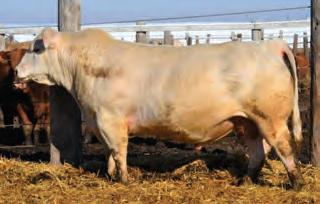




40 LINE RIDER MARCH 2024 www.idahocattle.org Trace Mineral: Copper Benefits •Supports reproductive wellness
fertility rates by promoting consistent cycling Trace Mineral: Selenium Benefits •Respiratory health •Immunity functions •Musculoskeletal structure •Cardiac health Microbial Digestion Support Rumen health enhancing ingredients promote fiber digestion so cattle can perform better on low-quality forages. Crude Protein
•Boosts
& bone growth
weight
for gestation
lactaction health Forage Boost Give your forage a boost with supplements designed to replace deficient minerals, vitamins and protein content. Complete Vitamin and Trace Minerals •Healthy calf growth •Stronger immune response •Supports skin, coat, and bone health Stress Support Avoid shrinkage and maintain a healthy immune system even under stressful conditions such as weaning. Se 34 Cu 29 DISCOVER YOUR MISSING MINERALS & REQUEST A CONSULTATION: 800.426.3572 WWW.PERFORMIXNUTRITION.COM Learn more at performixnutrition.com or join the conversation at /performixnutrition Discover how the right supplements increase cattle health. NUTRITION SYSTEMS DRY MINERAL • LIQUID SUPPLEMENT • PROTEIN MINERAL BOXES • FEEDLOT SUPPLEMENTS Better nutrition for better profits. Discover the difference. Offering 40 Purebred Charolais: 25 Age-Advantage 2-year old bulls 15 yearling bulls 10 Red Factor Charolais bulls Performance, semen & trich tested Live Online Bidding and videos on 48YEARS PRODUCINGHARDY,MOUNTAIN-RAISED CHAROLAIS CATTLE! FREE HAULING within WA STATE & FROMTOPPENISH,WA ALONG I-84 THROUGHOREGONTO CALDWELL,ID SI BLIN GS OF THESE BULLS SELL!
New and renewed ICA members
7 Rivers Livestock
Commission
AGPROfessionals
Anita Erickson
Ann Wilson
Arnold & Teresa Callison
Arvid Carlson
Autumn Gilbert
Bank of Commerce
Black Livestock, LLC
Bob Prosser
Brett Williams
Bruce McFarland
Cade Brackett
Callie Jo Arriola
Calvin Jones
Cevin Jones
Chantry Brackett
Chrissy Payne
Clark County
Stockgrowers
Clayton Richins
Conquest Insurance
Craig Mello
Curtis Jones
Dan & Kathy Mori
Dave Harris
Douglas Whitnah
Ed Olson
F. G. Jack & Lorna Sifers
Five Rivers Cattle
Feeding Co
Foundation for Wildlife Management
Frank & Pam McIntire
Gene Klaft
Guthrie Newell
Hannah Doumit
Harris CPA’s
Hoggan Brothers Inc.
Intermountain Beef
Producers
Ira & Kim Brackett
Ireland Ranch LLC
Jackson Dille
Jake & Jennifer Zollinger
James Brown
James Jackson
James Wood





Jay Theiler
Jayne Davis
JD Folsom
Jim & Sue Smith
Jim Hagenbarth
Jim Rountree
John & Arlene Rueb
John & Stephanie
Hagenbarth
Joni Krakau
Jordan Sparrowk
Joseph Doumit
Josh Whitman
Justin & Jodie Mink
Justin Lamb
JW Wood
Kamlah & Janey Roundy
Kasey Rowser
Katherine Doumit
Kenneth & Nina Black
Kenny & Teresa Kershner
Kevin Walker
Kim & Lesli Lemmon
Kim Stuart
Linc Whitnah
Liz Moore
Logan Peters
Lydia Whitnah
Mark & Lori Swall
Mark & Sandy Lange
Matt Buyers
Matthew & Stacey Doumit
Max S. Palmer Inc
Melissa Woods
Mike Davis
Mike Guerry
Mike Stewart
Novonesis
Nutra-Lix, Inc.
Performix Nutrition Company
Ralph & Scotti Yantis
Rand & Rosemary Dixon
Ray Brown
Rex Hoagland
Rhett Brackett
Riley Merrigan
Ritchie Industries
Robert Rebholtz, Jr.
Robert W. Johnson
Russell (Tony) & Pam
Pantone
Rusty Hamilton
Sam Johnson
Samantha Short
Scott & Sherri Nicholson
Steve Werk
Steven Miller
Stockmen’s Supply Inc.
Stonebraker McQuary Insurance
Ted & Sandy Cantrell
Terry Reynolds
Tim Brady
Valorie Williams
Van Sandifer, Jr.
Wade Small
Wade Wallace
Wayne Grover
Weiser River Soil
Conservation
Zane Brackett
Zane Burgess



www.idahocattle.org IDAHO CATTLE ASSOCIATION 41
MEMBERSHIP





Office:






42 LINE RIDER MARCH 2024 KODY DEE WILLIAMS Northwest Regional Manager www.allflex.global/us/ Cell: 509.948.6430
800.989.8247 Email: kodydeewilliams@allflexusa.com P.O. Box 612266 • 2805 East 14th Street Dallas/Ft. Worth Airport, Texas 75261-2266 Dennis Boehlke 9351 Lake Shore Drive Dennis: Nampa ID 83686 (208) 989-1612 2 miles west of Hwy. 45 PRIVATE TREATY SALES HEREFORD & RED ANGUS 2 Year Olds & Spring Yearling Bulls Spring Yearling Hereford & Red Baldy Heifers James & Dawn Anderson 208-280-1505 208-280-1509 Beverly Bryan JBB/AL HEREFORDS 1973 S 1500 E GOODING, ID 83330 jbbalherefords@gmail.com Bryan & Charly Anderson 208-280-1964 Jae Anderson Check out our offering at jbbalherefords.com 50thAnnualProductionSale March12th2024 Lunchat11:30•1:00MSTpm•AtRanchinAshton,Idaho 120YearlingRedAngusBullsand85YearlingHeifers www.loosliredangus.com BrianLoosli 3127E.1100N. Ashton,ID83420 208-652-3303 208-317-7878 blloosli@gmail.com JonathanMeek 208-227-3779 MarkLoosli 208-351-3333 KNIPE LAND COMPANY • Farm, Ranch, Recreation, Large Land Parcels, and High Net-Worth Real Estate • 1031 Tax Deferred Exchanges info@knipeland.com • 208-345-3163 • www.knipeland.com Our experienced sales team is ready to solve your real estate needs. Ready to buy or sell? Call today! AMERICA’S LIVESTOCK MARKETING LEADERWORKING FOR YOU. 2700 Airport Way, Boise, ID, 83705 855-868-6842 info@superiorlivestock.com VISIT OUR NEW BOISE LOCATION! AMERICAN HEREFORD Association EMILEE HOLT Territory 1 Field REp. PO BOX 151, Huston, ID 83620 (208) 965-3130 cell eholt@hereford.org BUILT ON TRADITION. ENGINEERED TO SUSTAIN. BREEDER & SERVICE GUIDE


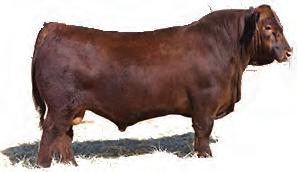
Red Angus McCann
mccannredangus.com
Thank You for Your Support!
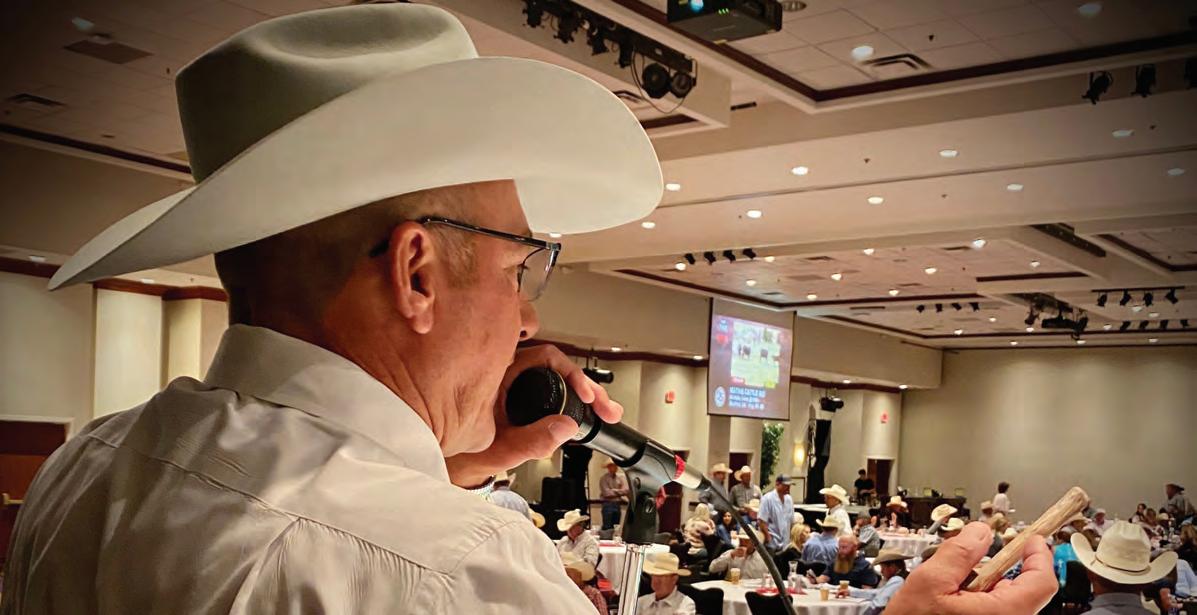
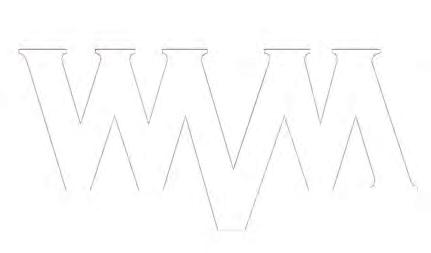


Name, Not a number Consignment Deadline:
WVM Headquarters | Cottonwood, CA Follow us Contact Us www.wvmcattle.com wvm@wvmcattle.com (530) 347-3793 Thursday,
Deadline:
Harris Ranch Resort
Simulcast on DISH 998 Thursday,
Deadline:
WVM Headquarters |
Thursday,
Market where you’re a Watch all of our sales on wvmcattle.com Upcoming Sales
March 25
April 11 Consignment
April 17
| Coalinga, CA
May 2 Consignment
May 15
Cottonwood, CA
May 23

















 BY JERRY WROTEN ICA President
BY JERRY WROTEN ICA President






 BY CAMERON MULRONY ICA Executive Vice President
BY CAMERON MULRONY ICA Executive Vice President

 BY KAREN WILLIAMS ICA Natural Resources Policy Director
BY KAREN WILLIAMS ICA Natural Resources Policy Director
 BY VAL CARTER ICA Vice President
BY VAL CARTER ICA Vice President















 BY JAMES RISCH U.S. Senator
BY JAMES RISCH U.S. Senator






















 BY PATXI LARROCEA-PHILLIPS
BY PATXI LARROCEA-PHILLIPS


























































































































































